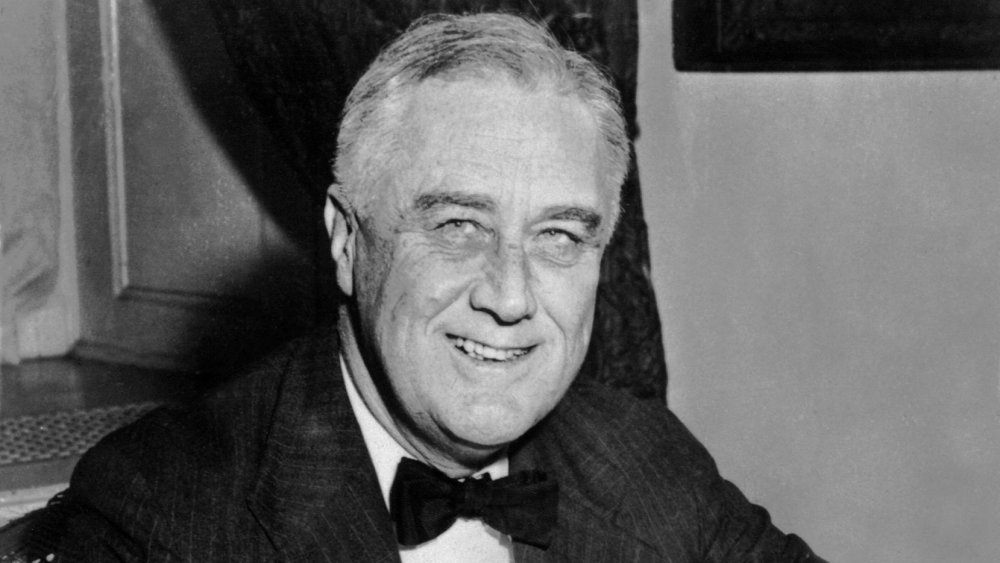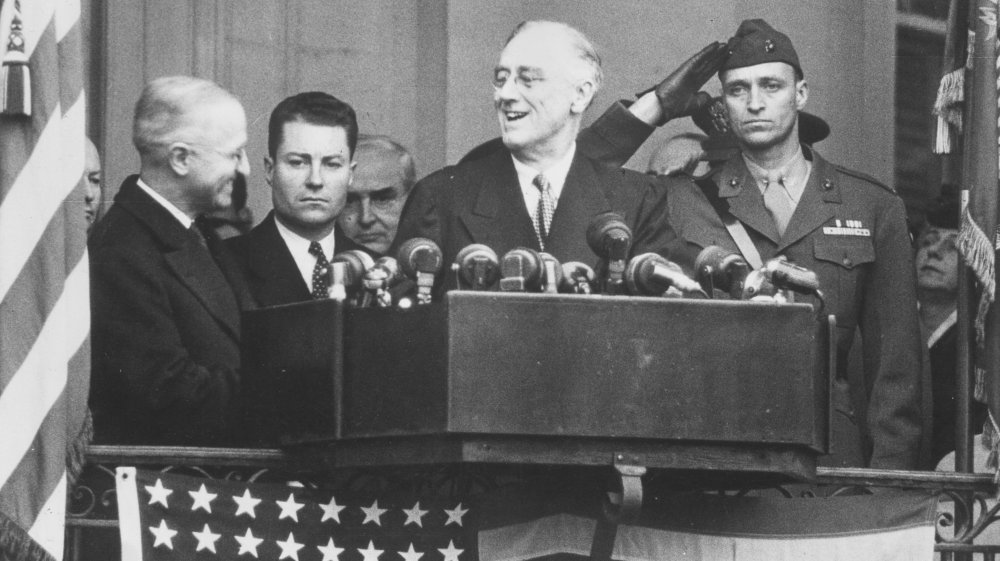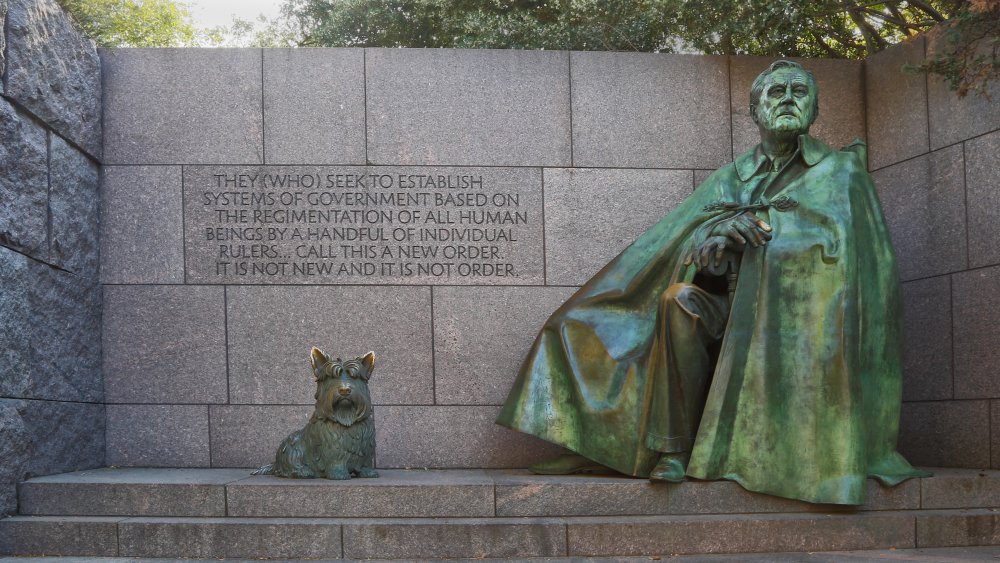How Franklin Roosevelt Convinced America He Could Walk
Was it polio? That was the consistent diagnosis at the time. Current medical opinion is inclined to think that Franklin Delano Roosevelt, later the 32nd president of the United States, might have had Guillain-Barre syndrome instead. Whatever the condition, when he was 39 his legs were paralyzed, and remained so for the rest of his life.
Even then, people might have claimed that perception is reality (though Psychology Today cites evidence that it isn't true), and he feared that a man in a wheelchair would be seen as weakened, unable to provide strong leadership — "half a man." Franklin had serious political ambitions, but what would people think? He was careful to never be seen in public using a wheelchair, and had a car modified so that he could drive using only his hands, though that meant bracing the steering wheel with only his torso while he used both hands to work the other controls.
Braces, a cane, and a helping arm
It didn't stop him from public life — he was elected Governor of New York seven years later. His illness was never actually a secret. He was a national figure after an unsuccessful run for vice president in 1920, and his condition was reported in the New York Times. But it couldn't be seen as overpowering him if he wanted to continue in public life — and he most assuredly did; President Theodore Roosevelt was a distant cousin. He ratcheted up his personal charm — per Jonathan Alter's book The Defining Moment he'd often end a conversation by smiling and saying, "Gotta run!" — but charm can only get you so far. He sought for some method that would allow him to compensate for the paralysis. Remember that this was the 1920s — steel was not yet the sometimes lightweight substance seen today. Roosevelt began to use heavy steel braces on his legs. He practiced trying to give the illusion of walking — even a few steps would leave him soaking with sweat.
He's depicted sitting down for his memorial in Washington D.C.
In time he developed a halting gait that involved the braces, a cane, and leaning, with an appearance of casual affection, on the arm of one of his adult sons. The braces were not only heavy, but extremely painful as well, and Roosevelt used them only rarely. If he was photographed, usually it was while he was sitting down, but almost never in his wheelchair; there was a kind of unspoken agreement among journalists that he would not be filmed or photographed in a way that suggested physical weakness. It was a different time. Not perfect. But in some ways, better.
Roosevelt went on to be elected president of the United States four times, leading the country through recovery from the Great Depression and through World War II. In his 1933 inaugural address he reminded us that "we have nothing to fear but fear itself." By early 1945, as told by Biography, he was suffering from atherosclerosis, coronary artery disease and congestive heart failure. He died from a massive cerebral hemorrhage April 12, 1945, age 63.


